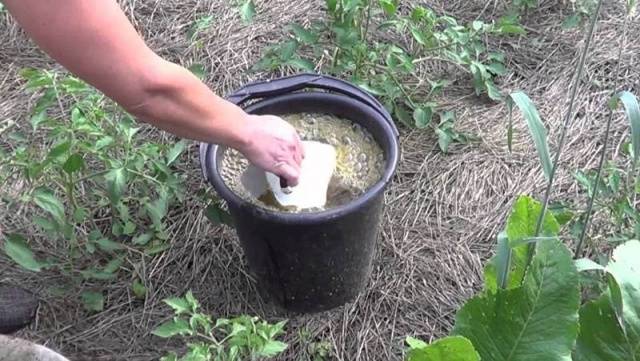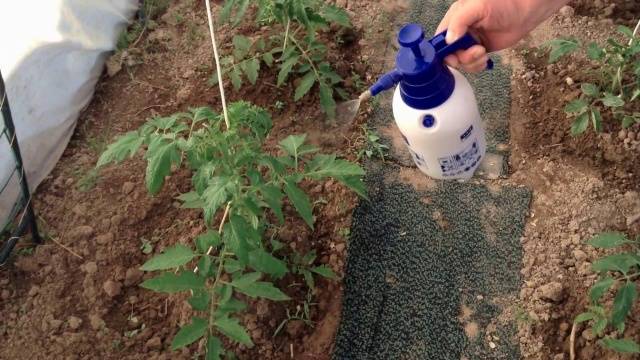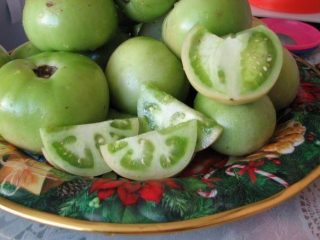Content
When growing tomatoes in a greenhouse plants become completely dependent on humans. What kind of soil will he place there, what will he add to it, how often and how much will he water, as well as what fertilizing will be done and in what sequence. The well-being of tomatoes, their flowering and fruiting, and therefore the quantity and quality of the harvest that the gardener will receive directly depends on all this. Naturally, everyone wants to get the maximum yield of tomatoes, but the quality of the fruit is no less important. Since with abundant application of mineral fertilizers it is quite possible to get a large number of tomatoes, but will they be healthy and tasty?
Recently, gardeners and summer residents are increasingly recalling ancient recipes that our great-great-grandmothers used when such a variety of fertilizers and fertilizing did not exist in abundance. But the vegetables were all right.
One of the most popular and simplest ways to support the active life of tomatoes is the use of ordinary yeast as a top dressing.Moreover, feeding tomatoes with yeast in a greenhouse can be used for many purposes at once - to replenish nutrients, to stimulate active growth and fruiting, to prevent diseases and pests.
Yeast is a natural stimulant for tomatoes
Yeasts are living organisms with a rich mineral and organic composition. When they are introduced into the soil under favorable conditions, yeast interacts with local microorganisms. As a result of the active activity of the latter, many nutritional elements, which were previously in an inert state, begin to be released and come to a state in which they can be easily absorbed by tomato plants. In particular, as a result of the activity of microorganisms, there is an active release of nitrogen and phosphorus - two main elements that are vital for tomatoes to develop.
But the cost of yeast is disproportionately less, and therefore it is much more profitable to use it.
True, it follows from this that for good interaction, yeast needs the required number of microorganisms in the soil. And they appear only when there is sufficient organic matter in the soil. This means that before planting tomatoes in a greenhouse, it is advisable to make sure that the soil in the greenhouse is saturated with organic matter. Usually, for these purposes, a bucket of compost or humus is added per square meter of beds. This amount should be enough for tomatoes for the whole season. In the future, after planting the seedlings, it is advisable to additionally mulch them with straw or sawdust.This will have a beneficial effect on maintaining moisture in the soil, which will reduce the amount of watering. On the other hand, this organic matter will allow tomatoes to do without additional fertilizers in the future if you use yeast for fertilizing.
But in this case, they have also long ago come up with a way out: along with yeast fertilizing or the day after it, add wood ash to the bed with tomatoes. It is a source of essential calcium and potassium, as well as many other microelements.
Yeast has another unique ability - when dissolved in water, it releases substances that enhance the root growth process several times. It is not for nothing that they are included in many modern root formation stimulants. This property also has a positive effect on the growth and development of tomatoes in a greenhouse when feeding them with yeast.
To summarize, we can say that yeast is a valuable substance for use as a fertilizer for tomatoes, because as a result of its application:
- You can observe active growth of the above-ground parts of tomatoes;
- The root system is growing;
- The composition of the soil under tomatoes is qualitatively improved;
- Seedlings tolerate picking easier and recover faster;
- There is an increase in the number of ovaries and fruits. Their ripening period is reduced;
- Tomatoes become more resistant to adverse weather conditions;
- Resistance to major diseases, primarily late blight, increases.
In addition, yeast does not contain any artificial additives, so you can be guaranteed to get an environmentally friendly harvest. They are also affordable for every gardener, which is not always the case with other fashionable fertilizers.
Application methods and recipes
Yeast dressing can be prepared in several different ways. In addition, it can be applied either by watering the tomatoes at the root, or by spraying the entire bushes (the so-called foliar feeding). It is necessary to understand when it is better to carry out which procedure.
Watering under the roots of tomatoes
At all, yeast feeding It has such a beneficial effect on tomatoes that plants can be treated with a yeast solution already at the seedling stage. Of course, if you grow it yourself. The first time you can carefully water the young shoots when the first two true leaves form.
For this, the following solution is usually prepared:
Take 100 g of fresh yeast and dilute it in a liter of warm water. After letting it sit for a while, add enough water so that the volume of the final solution is 10 liters. If there are not so many tomato seedlings, then the proportions can be reduced by 10 times, that is, dilute 10 grams of yeast in 100 ml of water and bring the volume to one liter.
If the solution begins to ferment, then it is better not to use it for seedlings. This recipe is more suitable for adult plants preparing to flower or bear fruit.
Feeding tomatoes with yeast at a very early stage, it helps tomato seedlings not to stretch out and grow strong, healthy stems.
The seedlings can be fed a second time a few days after they are planted in a permanent place in the greenhouse. For this feeding, you can use the first recipe, or you can use a more traditional one, which involves some fermentation of yeast:
To prepare it, 1 kg of fresh yeast is kneaded and completely dissolved in five liters of warm water (preheated to approximately +50°C). The solution needs to sit for a day or two. After you smell the characteristic smell of sourdough, the solution must be diluted with water at room temperature in a ratio of 1:10. For each tomato bush you can use from 0.5 liters to one liter.
You can use another recipe with added sugar:
Dissolve 100 grams of fresh yeast and 100 grams of sugar in three liters of warm water, cover with a lid and place in any warm place to infuse. Before processing, it is necessary to dilute 200 grams of the resulting infusion in a 10-liter watering can with water and water the tomato bushes at the root, spending about one liter of liquid on each bush.
Of course, using live fresh yeast is more effective, but if for some reason you cannot use it, then dry yeast can also be used to feed tomatoes in a greenhouse.
In this case, it is enough to dilute 10 grams of yeast in 10 liters of warm water, add two tablespoons of sugar and leave for several hours to several days. The more mature tomato bushes you feed, the longer the yeast solution should be infused. The resulting infusion should be diluted with water in a ratio of 1:5 and watered tomato bushes at the root.
Foliar feeding
Spraying tomatoes with a yeast solution is mainly practiced not so much for feeding, but to protect them from diseases and pests. The best preventative procedure for protection against late blight is to prepare the following solution:
Dilute 100 grams of yeast in one liter of warm milk or whey, leave for several hours, add water so that the final volume is 10 liters, and add 30 drops of iodine. Thoroughly spray the tomato bushes with the resulting solution. This procedure can be carried out twice a season: before flowering and before fruiting.
Rules for feeding tomatoes with yeast
In order for yeast feeding to be as effective as possible, the following rules must be followed:
- Yeast works well only in warm conditions, in heated soil, but in greenhouses suitable conditions usually form a month earlier than in open ground. Therefore, the first fertilizing with yeast can be carried out immediately after planting the seedlings, at a soil temperature of at least +15°C.
- In a polycarbonate greenhouse, as a rule, higher temperatures are observed than in open ground, and all processes occur faster. Therefore, it is better to use fresh yeast solution without infusion for the first fertilizing of tomatoes.
- Don’t get carried away with feeding tomatoes with yeast. In one season, two or three procedures will be more than enough.
- Don't forget to add wood ash every time you feed yeast. For 10 liters of solution, about 1 liter of ash is used. You can simply add one tablespoon of ash to a tomato bush.
There is nothing complicated in feeding tomatoes with yeast, but in terms of its effectiveness it is not inferior to mineral fertilizers.


















